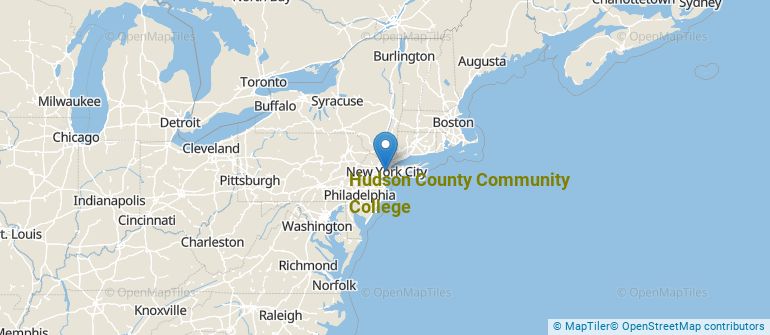 by our College Data Analytics Team
by our College Data Analytics TeamExplore the best ranked schools for the programs you are most interested in.
According to College Factual's 2025 analysis, HCCC is ranked #1,749 out of 2,152 schools in the nation that were analyzed for overall quality. This is an improvement over the previous year, when HCCC held the #1,919 spot on the Best Overall Colleges list.
HCCC also holds the #42 spot on the Best Colleges in New Jersey ranking.
See all of the rankings for Hudson County Community College.
Returning adults and other non-traditional students may appreciate the fact that Hudson County Community College has an open admissions policy. This means that you'll only have to submit basic materials, which may include proof that you completed high school or an equivalent program.
The student to faculty ratio at Hudson County Community College is 22 to 1, which is high when compared to the national average of 15 to 1. This may indicate that some of your classes will be larger in size than they would be at other schools. However, upper level classes will probably be smaller.
In addition to the student to faculty ratio, some people look at what percentage of faculty members are full-time as a sign of how much time professors will be able to spend with their students. This is because part-time teachers may not be be on campus as much as their full-time counterparts.
The full-time faculty percentage at Hudson County Community College is 100%. This is higher than the national average of 47%.
The freshmen retention rate tells us what percentage of first-year, full-time students choose to continue on to their sophomore year at a particular school. The rate at Hudson County Community College is 65%, which is about average when compared to the national rate of 68%.
During the 2017-2018 academic year, there were 7,039 undergraduates at HCCC with 3,822 being full-time and 3,217 being part-time.
| $0-30 K | $30K-48K | $48-75 | $75-110K | $110K + |
|---|---|---|---|---|
| $5,735 | $5,647 | $7,490 | $9,563 | $9,950 |
The net price is calculated by adding tuition, room, board and other costs and subtracting financial aid.Note that the net price is typically less than the published for a school. For more information on the sticker price of HCCC, see our tuition and fees and room and board pages.
Almost 66% of college students who graduated with the class of 2018 took out student loans, but that percentage varies from school to school. At HCCC, approximately 2% of students took out student loans averaging $4,958 a year. That adds up to $19,832 over four years for those students.
Get more details about paying for Hudson County Community College.

See which majors at Hudson County Community College make the most money.
Get more details about the location of Hudson County Community College.

Contact details for HCCC are given below.
| Contact Details | |
|---|---|
| Address: | 70 Sip Avenue, Jersey City, NJ 07306 |
| Phone: | 201-714-7100 |
| Website: | www.hccc.edu/ |
| Most Popular Majors | Bachelor’s Degrees | Average Salary of Graduates |
|---|---|---|
| Liberal Arts General Studies | 271 | NA |
| Business Administration & Management | 130 | NA |
| Nursing | 109 | NA |
| Criminal Justice & Corrections | 78 | NA |
| Biological & Physical Science | 77 | NA |
| Computer Information Systems | 73 | NA |
| Culinary Arts | 56 | NA |
| Health Sciences & Services | 51 | NA |
| Accounting | 49 | NA |
| Natural Resources Conservation | 46 | NA |
Online learning options are becoming more and more popular at American colleges and universities. Online classes are great for students who have busy schedules or for those who just want to study on their own time.
In 2022-2023, 4,258 students took at least one online class at Hudson County Community College. This is a decrease from the 4,797 students who took online classes the previous year.
| Year | Took at Least One Online Class | Took All Classes Online |
|---|---|---|
| 2022-2023 | 4,258 | 2,331 |
| 2021-2022 | 4,797 | 2,515 |
| 2020-2021 | 5,650 | 3,826 |
| 2018-2019 | 1,521 | 197 |
Learn more about online learning at Hudson County Community College.
Footnotes
*The racial-ethnic minorities count is calculated by taking the total number of students and subtracting white students, international students, and students whose race/ethnicity was unknown. This number is then divided by the total number of students at the school to obtain the racial-ethnic minorities percentage.
References
More about our data sources and methodologies.